Products & Technologies
Products & Technologies
Services
Resources
Posted
March 07, 2023

Stay updated on our content.
Semiconductor Industry Sustainability Priorities – A Systems Engineering Opportunity
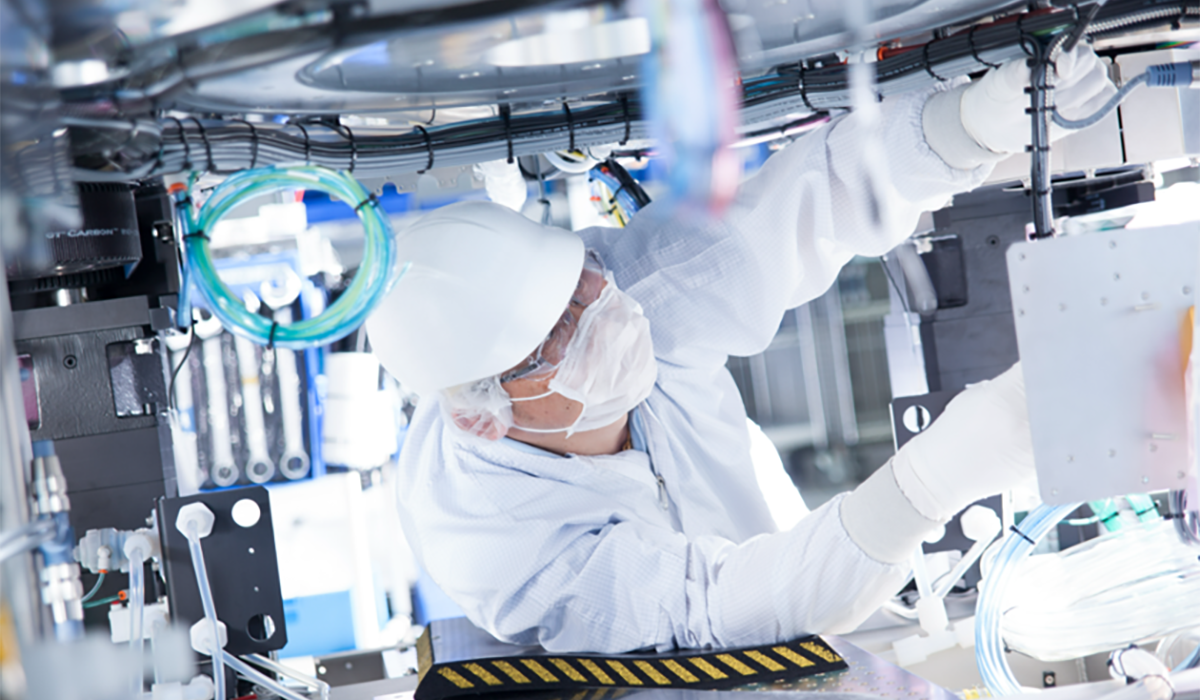
By Chris Librie
Mar 7, 2023
Reducing emissions and optimizing resources in semiconductor manufacturing is an immensely complex undertaking, with multiple moving parts and several cascading impacts. While semiconductors are key to enabling a sustainable future, fabricating those chips is a notoriously resource-intensive process. Consider: a single fabrication plant can consume up to 10 million gallons of water a day, as much electricity as what's needed to power 50,000 homes daily, and, over the course of a year, generate 60,000 tons of waste.
An industry-wide consensus has emerged around the importance of driving sustainable practices into semiconductor production, especially as the industry is poised for further growth in the years ahead. Moreover, individual companies are stepping up to do their part. As outlined in our most recent Sustainability Report, Applied Materials has made significant progress in reducing our carbon footprint and powering our operations increasingly with renewable energy. Other industry players are taking similar actions to reduce their Scope 1 and Scope 2 emissions (those produced by a company and the energy it consumes).
Yet, as an industry we need to take these efforts to the next level. Decarbonization requires a concerted and collective effort to reduce Scope 3 emissions – those generated across a company’s entire value chain. And this is where things get complicated because it involves working with industry partners, suppliers, and customers to define levels and sources of emissions being generated beyond the control of any individual entity. The issue then becomes one of defining the actions that are most likely to have a meaningful and measurable impact.
High Value Problem
The stakes involved couldn’t be higher. Advancing decarbonization is critical to the future of the semiconductor industry and, ultimately, to the future of the planet. Indeed, in systems engineering terms, it’s perhaps the most significant high-value problem you can imagine.
The good news is we are systems engineers. In our industry, we apply our skills, talents, and methodologies to fuel unprecedented advances and innovation in semiconductor capabilities. These same qualities are needed to untangle the multi-layered complexities involved in creating a more sustainable industry. Specifically, a systems engineering mindset can define the cause-and-effect linkages that tie short-term actions to long-term collective goals. These linkages provide the foundation for the essential task of tracking progress over time and holding individual stakeholders accountable throughout the journey.
Outlined here are three priority areas where – individually as companies, and collectively as an industry – systems engineering practices can move the decarbonization needle in the right direction.
1. More Efficient Products and Production Processes
Decarbonization starts with each company reducing environmental impact through more efficient processes and greater reliance on clean sources of energy. But this goes beyond each company merely taking responsibility for its own footprint. Specifically, the upstream and downstream effects of production practices must be considered.
When calculating a company’s Scope 3 emissions, the Greenhouse Gas (GHG) Protocol includes the lifetime emissions generated by the use of products by end users. In Applied’s case, these are the emissions that result from the energy and chemicals required to power our equipment at customers’ fabs over the full product lifespan.
Applied’s analysis of Scope 3 emissions illustrates the impact of product usage – and the extent to which we are all in this together. Based on our 2019 baseline, we estimate that Use of Sold Products (Category 11 in the GHG Protocol) accounts for about 80 percent of Applied’s total Scope 3 impact for our semiconductor products (see chart below). As such, we have a powerful mutual interest in improving our own practices, as well as working with our customers to help them improve theirs. Put simply, “not my problem” is not an option.
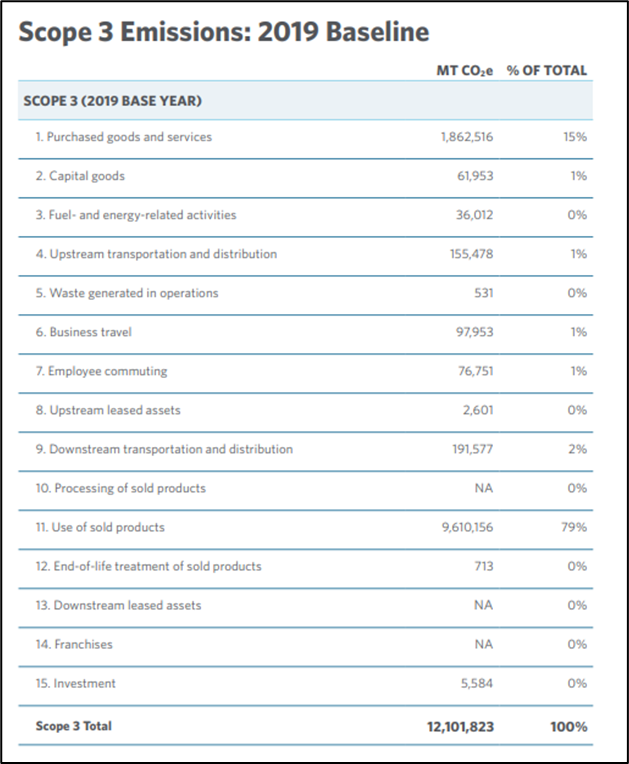
Among the 15 categories defined by the GHG Protocol, Category 11 – Use of Sold Products, represents by far the largest share of Applied’s Scope 3 emissions. This category denotes the combined total emissions from all Applied semiconductor products sold during a reporting year (including emissions from both the technology’s energy draw in customer fabs and the chemicals and gases used in operational processes), estimated over the average lifetime of those products.
Meanwhile, a collaborative approach – particularly where systems engineers are involved – can have a meaningful impact. Applied’s iSystem™ platform leverages intelligent Internet of Things (IoT) capabilities to enhance energy efficiency without impacting production output, and has helped improve efficiencies, reduce emissions and lower energy consumption for chipmakers such as TSMC. The platform’s “energy-saving mode” enables demand-based consumption of electricity by synchronizing energy needs to operation.
2. Grid Decarbonization
Innovative technology solutions enabling more efficient production processes and practices that reduce energy consumption address the demand side of the equation at the fab. Nonetheless, even the most energy-efficient fabs will still require massive amounts of electricity. As such, grid decarbonization is essential to significant and sustainable emissions reduction.
As an industry, we need to invest in scaling renewable forms of energy such as wind and solar, and evaluate other carbon-free energy sources and storage methods. Advocacy, meanwhile, needs to focus on smarter practices – such as ensuring that new fabrication facilities are located in areas supplied by higher amounts of renewable energy and that can accommodate demands for massive amounts of water. In determining the location of new fabs, a systems engineering perspective must be included in decisions traditionally made by economic development authorities and politicians.
3. Enhance Supplier Practices
Systems engineering expertise can also be applied to enhance supplier practices. The opportunity is significant, as Purchased Goods and Services (Category 1) represent about 15 percent of Applied’s estimated Scope 3 emissions and are the second largest contributor to our footprint.
Here, engineers can help procurement teams define emissions-focused metrics and criteria used to select and evaluate suppliers. Contractual clauses that provide financial incentives for suppliers to invest in new technologies or to develop new processes that reduce emissions can be a powerful tool to prioritize sustainable practices. Engineers have the knowledge needed to identify the areas that, for suppliers, are most attractive from a business standpoint, and that will have the most significant environmental impact.
For example, IoT initiatives that leverage smart sensors and networks of connected devices can monitor energy requirements, optimize consumption, and document savings. In addition, such solutions continually collect and analyze data to yield new insights that can inform ongoing improvements. Here again, an engineering perspective can ensure that initiatives find the sweet spot that enhances business results as well as achieves sustainability goals.
Systems engineering thinking can build the foundation needed to define priorities, develop innovative solutions that drive measurable gains and build momentum for continued progress. Cooperation is essential – our company is just one component of a complex ecosystem, where independent actions are inherently limited. Prospects for cooperation, meanwhile, are bright. One recent example of this is the SEMI Climate Consortium or SCC – a group of semiconductor equipment manufacturers and chip makers focused on decarbonizing our industry. Applied is a proud SCC founding member.
The idea of the semiconductor industry collaborating to accelerate its transformation to a lower carbon future is very exciting. It will surely test our systems engineering skills to the limit, but the benefits for society will be more than worth the effort.
Chris Librie
Senior Director of ESG, Corporate Sustainability and Reporting

Chris Librie is senior director of ESG, corporate sustainability and reporting. Prior to joining Applied Materials in 2020, Chris led ESG and corporate sustainability programs at Samsung Semiconductor, eBay and HP Inc. He holds an MBA from the University of Edinburgh and an undergraduate degree in history from the University of Pennsylvania.
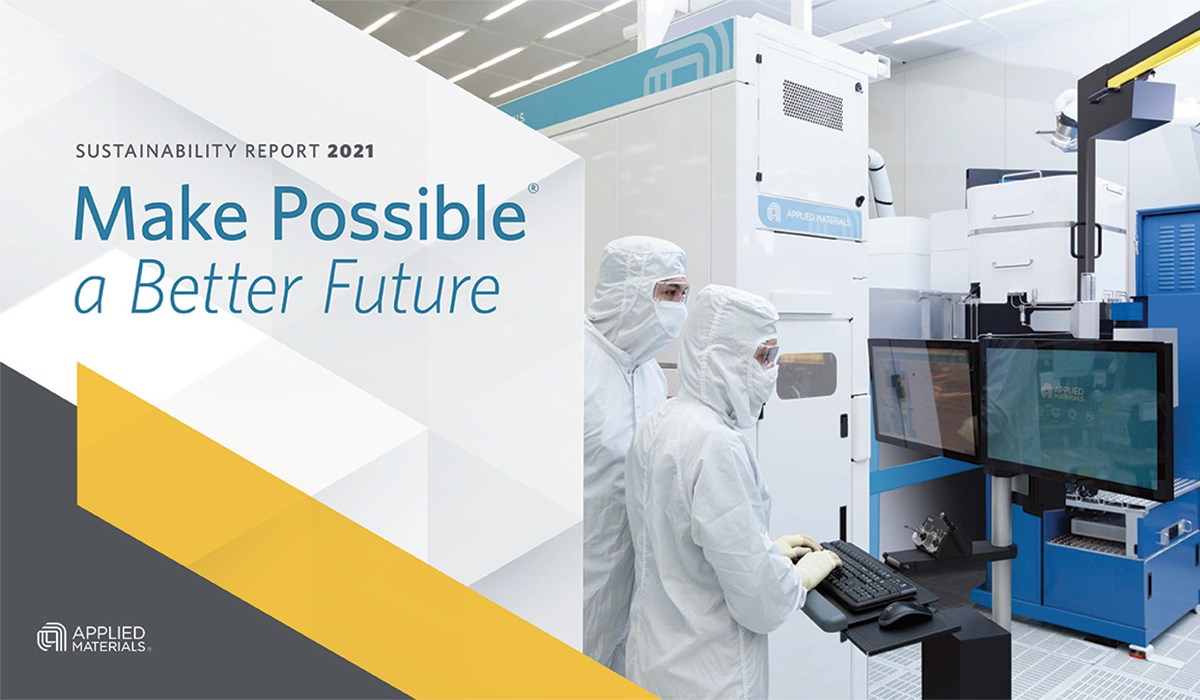
Enabling a Sustainable Chip Industry Requires a Long-Term Vision and Near-Term Actions
Applied Materials has published its Sustainability Report for 2021, which we titled Make Possible® a Better Future. It highlights the significant progress we’ve made in reducing our carbon footprint and transitioning to renewable energy.
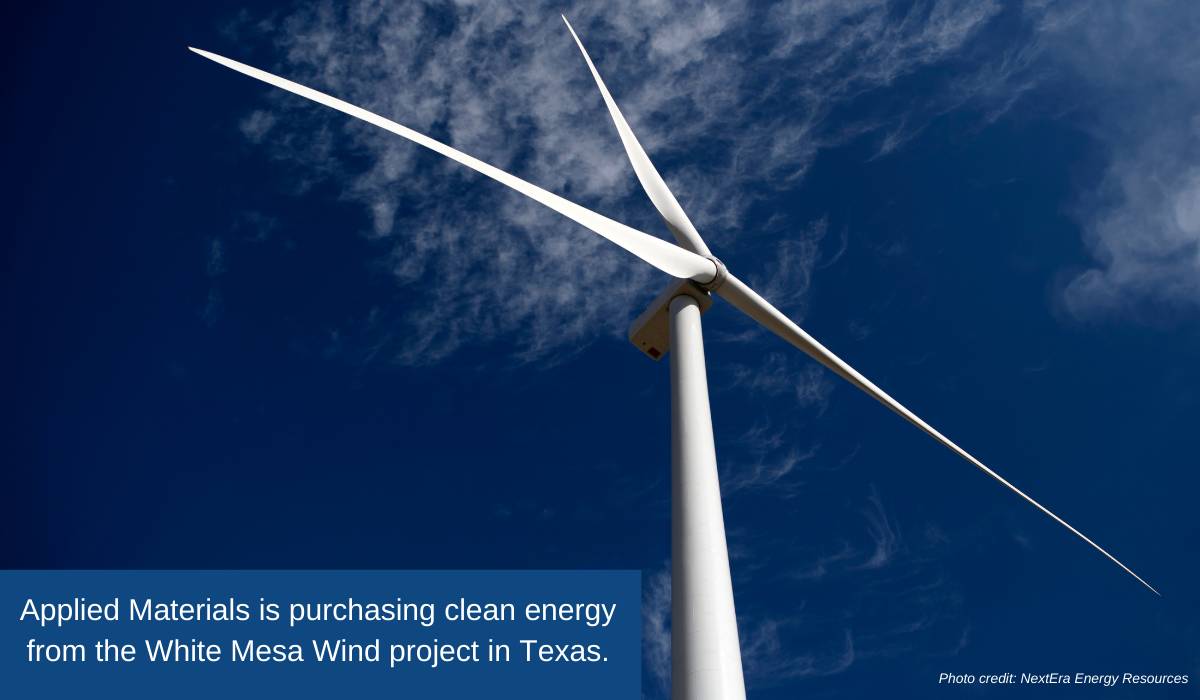
Improving the Climate Impact of a Growing Business
The continued growth of Applied Materials’ business means we need to work harder to manage our energy consumption and greenhouse gas footprint. While recent ratings show we’re continuing to make progress toward our climate goals, we’re busy developing new ways to maintain our momentum.
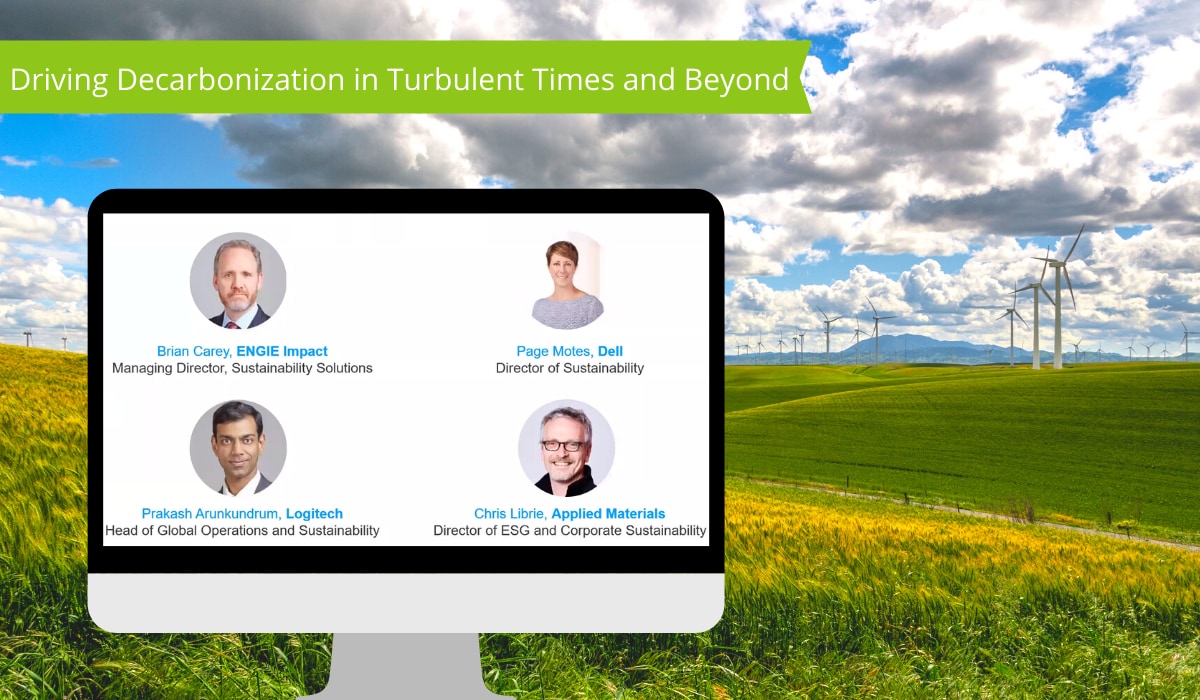
A Sustainability Discussion with Computing Industry Leaders: Seizing the Opportunity for Innovation
I recently had the pleasure of joining a panel with sustainability practitioners from the computing industry for a discussion titled, “Driving Decarbonization in Turbulent Times and Beyond” at the Responsible Business Summit.
